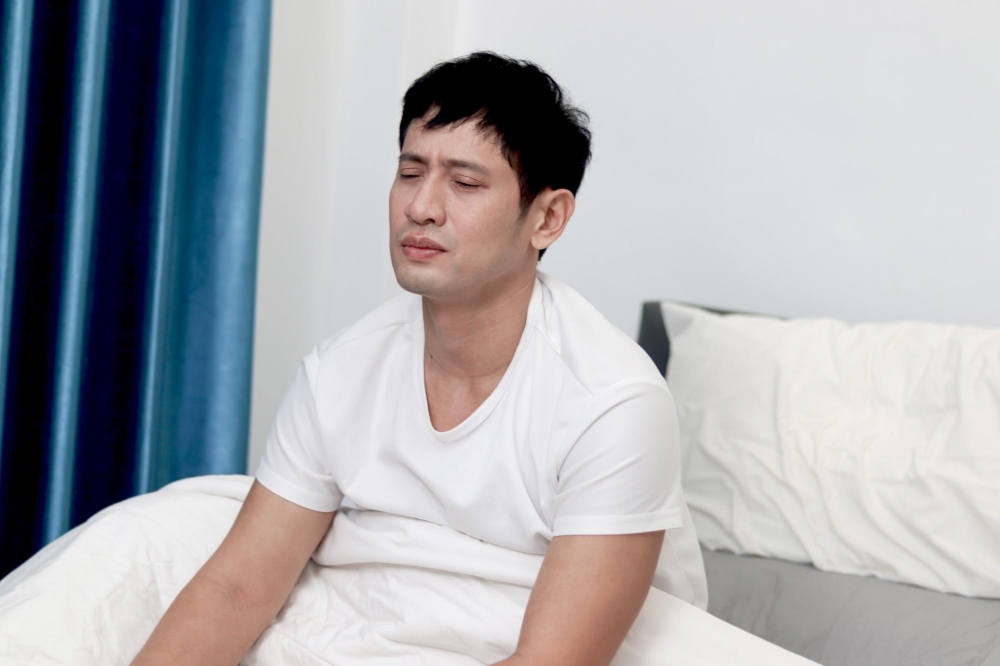Botox can help chronic migraine

MIGRAINE is a neurological disorder that often results in strong, persistent headaches, which can disrupt one's quality of life.
Many people perceive a headache and migraine to be similar. However, a migraine is more than just a headache.
HEADACHE AND MIGRAINE
Consultant neurologist and internal medicine physician at Sunway Medical Centre Velocity (SMCV) Dr Ellie Kok Huey Tean said many people mistake migraine for normal headaches.
"Most of us have experienced headaches. It happens usually due to stress, not having enough sleep or a lifestyle change. But, it can be gone after consuming one or two tablets of painkiller or paracetamol.
"With migraine, the pain will occur characteristically at particularly one side or area of the head, and it comes with symptoms like aura. Examples of aura are nausea, blurry vision, uneasiness and giddiness. This can happen before, after or during a migraine.
"Some people can become photosensitive, where they need to avoid the light from screens or sunlight, as it will make them feel irritated and want to hide in a dark or cooling place," she said.
Dr Ellie also mentioned that the symptoms of a migraine can be recurring. Some of her patients have had episodic migraine for over 10 to 20 years.
Migraine can affect those as young as 10 years old up to 40 years old. It is also three times more common in women compared to men.
"Until now, the cause of migraine is still unknown to scientists and neurologists. They believe that there are some pain stimulations that have been triggered in the brain. It cannot be investigated using imaging such as MRI tests and blood tests. The diagnosis needs to be assessed clinically by a neurologist," said Dr Ellie.

Dr Ellie Kok Huey Tean, consultant neurologist and internal medicine physician at Sunway Medical Centre Velocity (SMCV), Kuala Lumpur. - File pic credit (Sunway Medical Centre Velocity)
TRIGGERS OF MIGRAINE
"Migraine can affect a person's life a lot. It can make them miss work or restrict certain activities. Research shows that one in 12 people suffer from migraine.
"Some people have severe headaches that cannot be released despite taking over-the-counter medications. Thus, they need to see a neurologist to be assessed for further treatment in the hospital. When admitted, we have many methods of treatment, for instance, injectable medications, which are the fastest way to relieve the pain.
"We will try to counsel patients to explore what are the trigger factors for their migraine. It is usually from stress, some types of food that contain caffeine such as coffee or tea, cheese or chocolate," said Dr Ellie.
MANAGING MIGRAINE
Migraine can be categorised into two categories, episodic migraine or chronic migraine. It depends on the frequency of migraine attacks per calendar month. Depending on the category, it can help determine what treatment is suitable for the patient.
"If they have less than 14 days of migraine in a month, it is called episodic. If it is 15 days or more than 15 days in a month, it is called chronic. Those with chronic migraine have to take preventive medication daily to prevent it from coming back.
"We will start with recommending anti-migraine medications, as they help to reduce the pain stimulation in the brain. There is an active medication, which you can consume whenever you have a migraine attack," said Dr Ellie.
The consultant neurologist also mentioned that patients with episodic migraine can take over-the-counter medication like ibuprofen or NSAIDS to help relieve their migraine attacks.
If it does not work, patients will be referred to a neurologist and will be given migraine-specific medication that targets the release of pain stimulation in the brain.
BOTOX INJECTIONS FOR MIGRAINE
Another migraine prevention treatment is botulinum toxin (botox), which has been approved by the Food and Drug Administration (FDA). This treatment aims to prevent migraine before they start, but it takes time to work.
Botox is only used for patients with chronic migraine — those who suffer headaches more than 15 days in a month or those who suffer severe attacks.
How botox works is that it will be injected into the specific points around the scalp's soft tissues. As botox enters the nerve endings, it blocks the release of chemicals involved in pain transmission. This prevents the activation of pain networks in the brain.
"The injection will be injected once every three months, and it will be done at 31 points, all in the soft tissue of the scalp. It can be done all at once and only takes 15 to 20 minutes per session," said Dr Ellie.
Only small amounts of botox are injected into the shallow muscles of the skin, around the areas of the head and neck.

Botox is only used for chronic migraine patients. It will be injected into specific points around the scalp's soft tissues, preventing the activation of pain networks in the brain. - File pic credit (Unsplash)
"The good thing about botox is that there are not many side effects. Sometimes, patients may have headaches, but this is rare, as the dosage used is a small amount at each point," she added.
It can take up to two weeks to three months of botox treatment to see the maximum benefit.
Doctors would usually recommend oral medication for patients during the initial presentation and review the effectiveness of the therapy before recommending injectable treatment.
If patients reported unwanted side effects or were unresponsive to oral forms of treatment with recurring symptoms, botox will be an alternative option. It can be taken by all age groups, except pregnant women.
"There is another injectable treatment called anti-CGRP Monoclonal Antibody Injection, where patients can self-inject the medication. It only needs to be taken once a month, to prevent and also treat immediate pain," she said.
Botox is a long-term treatment. However, if the migraine frequency reduces, doctors would suggest reducing the dosage and frequency of the treatment. Patients can always switch to other treatments at any time, be it oral or anti-CGRP.
这篇文章对您有帮助吗?
有0 位用户在 0 位中觉得这很有帮助。
Suggest to Read









